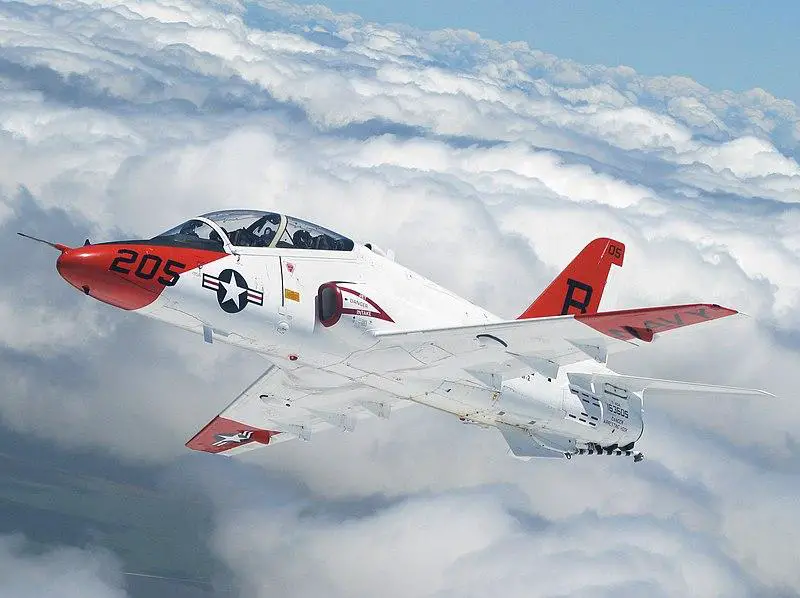Mercury Mission Systems LLC., located in Torrance, California, has been awarded a $24,926,631 contract modification by the U.S. Navy to supply heads-up displays (HUDs) for its McDonnell Douglas (now Boeing) T-45 Goshawk training aircraft. This contract, which builds on a previous agreement, involves the production and delivery of 60 HUDs, 25 production spares, support equipment, and associated technical data to enhance the training capabilities of the Navy’s pilot fleet. Work on this project will be performed at Mercury’s Torrance facility, with completion expected by March 2028. The funding, sourced from the Navy’s Fiscal 2024 aircraft procurement budget, is fully allocated at the time of the award and will remain available beyond the current fiscal year. The Naval Air Warfare Center Aircraft Division, located in Lakehurst, New Jersey, will oversee the contract. Mercury’s HUDs represent a significant technological advancement, offering DAL-A certifiable, electro-optical augmented display systems that provide real-time flight and weapon data in 1080p resolution, directly in the pilot’s line of sight. The HUD’s innovative low-profile design reduces pilot discomfort, maximizes the field of view, and integrates seamlessly with both digital and analog inputs. This makes it compatible with modern enhanced vision systems, including Forward-Looking Infrared (FLIR), which is essential for various training and operational scenarios.
The HUDs utilize Digital Micromirror Device (DMD)-based Digital Light Engine (DLE) technology to produce high-resolution, sun-readable symbology that is effective in both daylight and low-light conditions, including night vision. This flexibility allows pilots to access critical flight data regardless of environmental lighting conditions, enhancing operational readiness and safety. The design also focuses on reducing lifecycle maintenance and sustainment costs by using fewer components and optimizing Mean Time Between Failures (MTBF). These efficiencies contribute to lower long-term costs while maintaining high performance standards. Additionally, Mercury’s HUDs are equipped with a non-obstructive video camera assembly that allows for the recording of live video with overlaid symbology. The system’s reconfigurable and flexible FPGA (Field-Programmable Gate Array) IP enables integration with a variety of aircraft interfaces, including digital (ARINC 818) and analog systems. This adaptability ensures that the HUDs can be used with both legacy aircraft and future platforms, making them a versatile solution for the Navy’s evolving needs. Mercury’s BuiltSAFE commercial-off-the-shelf (COTS) technologies further enhance this flexibility, providing modular, reusable elements that maximize interoperability and speed up the integration of new technologies.

The T-45 Goshawk, a collaborative creation by McDonnell Douglas (now Boeing) and British Aerospace (now BAE Systems), is a heavily modified version of the British BAE Systems Hawk jet trainer. Designed specifically to meet the rigorous demands of the United States Navy (USN) and United States Marine Corps (USMC), the T-45 is a carrier-qualified variant adapted for aircraft carrier operations. The modifications occurred in two phases: first, a basic redesign to meet initial carrier requirements and, subsequently, further refinements following Navy flight evaluations. The initial redesign involved strengthening the airframe and landing gear to withstand the intense forces from catapult launches and high sink-rate landings of up to 14 feet per second. Key additions included a catapult tow bar on the nose gear, an arresting hook, side-mounted airbrakes, and stabilator vanes known as “Side Mounted Upper Rear Fuselage Strakes” (SMURFS) to enhance airflow stability with speed brakes deployed. However, flight tests by Navy pilots highlighted several deficiencies that required further modifications. These included external changes like the addition of a single ventral fin ahead of the arrestor hook, a 6-inch extension to the tail fin, squared-off wingtips, and leading-edge slats to improve the aircraft’s carrier-landing performance.
Mercury Systems is a recognized leader in the aerospace and defense sectors, with its technologies embedded in over 300 programs and deployed on more than 4,000 systems across the United States and 35 other countries. The company’s products are manufactured in facilities with superior industrial security ratings, ensuring compliance with the highest standards of quality and reliability. Headquartered in Andover, Massachusetts, Mercury operates 24 locations worldwide, providing mission-critical processing power and advanced technologies for some of the most challenging aerospace and defense missions globally. Mercury’s HUDs and other solutions are part of a broader portfolio that spans mission computing, sensor processing, command and control, and communications, supporting the U.S. military and allied forces in a wide range of applications. The company’s innovative technologies, such as the Mercury Processing Platform, enable rapid data processing and decision-making, crucial for today’s fast-paced defense environments. By making advanced technologies more accessible, Mercury Systems continues to play a pivotal role in enhancing the capabilities of the U.S. Navy and its global partners.











